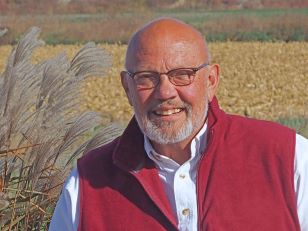Once you find the road in—the place is very much out of the way–the signs tell the story. I’ve visited twice, often enough to guess the state of Kansas gives other historical sites first dibs on overall maintenance. Marais des Cygnes Massacre State Historic Site is not a mess, but both times I was there it could have used a little TLC.
But why make the place look spiffy when significant weediness is somehow appropriate? Five men were murdered here, gang-land style, stood up and shot. Six lived to tell the tale, Free-staters, newcomers to Kansas, still a territory in 1858. They were shot because they opposed slavery.

“Bleeding Kansas” had lots of open wounds in the 1850s. Violence along the Kansas-Missouri border started the horror of the American Civil War, some historians say.
At the massacre site, things are well-marked. Once you know the story, it won’t be difficult to keep silent all around. Besides, you’re likely alone. There’s no gift shop, no t-shirts, just a few picnic tables you don’t have call ahead to reserve.
The story goes that a worried preacher’s wife went looking for her husband and found the murdered victims. Her husband, the Reverend Charles Reed was wounded but not killed, one of the six who managed to crawl away into the trees. The Reeds were Baptists from Wisconsin, who’d been in the neighborhood for only a week, long enough, however, to let it be known the Southerners who wanted Kansas open to slavery were an abomination.
That attitude didn’t go over well with Dr. Charles Hamilton, a Georgian who owned slaves and had recently been run off his Kansas land by abolitionists. Hamilton and a half-dozen other “Border Ruffians” grabbed eleven Free-Staters, marched them into a ravine far back off the beaten path, then shot them, fish in a barrel. The signage at the Marais des Cygnes Massacre State Historical Site remembers all of that. For the record, it was May 18, 1858.
On June 16, less than a month later, a strapping beardless country boy named Abe Lincoln stood in a hall in Springfield, Illinois—370 miles east and north from eastern Kansas—to accept the Illinois Republican Party’s nomination for the U. S. Senate. It was 1858, two years before Ft. Sumter.

What could Abe Lincoln have known about mass murder just south of the two or three houses called Trading Post, Kansas? He likely never heard of Dr. Charles Hamilton or the Reverend Charles Reed. What could he have known, really? Well, he couldn’t have been blind to what everyone was seeing: slavery was threatening the Union in ways a century-old government may not have imagined. Lincoln had to know Kansas was aflame. He’d seen, I’m sure, the raised fists of a whole number of Southern statesmen.
What the future President planned to say in his acceptance speech that night included passages his good friends had tried to talk him out of: the speech was too radical, they told him, too darn pushy.
But Lincoln would not be moved.
“Either the opponents of slavery will arrest the further spread of it, and place it where the public mind shall rest in the belief that it is in the course of ultimate extinction,” he said; “or its advocates will push it forward, till it shall become lawful in all the States, old as well as new — North as well as South.”
A fierce either/or. That’s the context of a Lincoln’s acceptance, a speech whose central line is sewn, for better or for worse, into the fabric of the national saga. That night, the tall, Kentucky-born candidate hadn’t pulled the speech’s most famous line out of his hat. He lifted it thoughtfully from any one of the four gospels: “Every kingdom divided against itself is brought to desolation,” he said; “and every city or house divided against itself shall not stand.”
Ever since that night so long ago, Lincoln’s famous speech has been referenced by a single memorable line from scripture—we think of it as his “House Divided” speech.
Maybe it’s just me, but today, more than a month after the November election, I can’t help thinking Lincoln’s insistent use of a single line of scripture that night has immediate relevance for this very day and this very hour. I wish that weren’t so.
“A house divided against itself cannot stand.”

